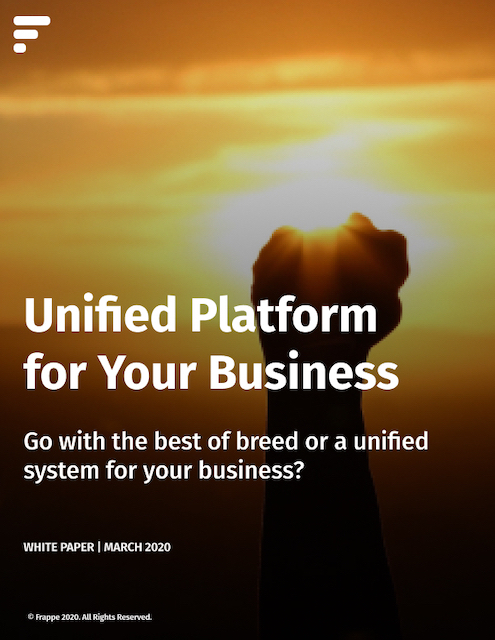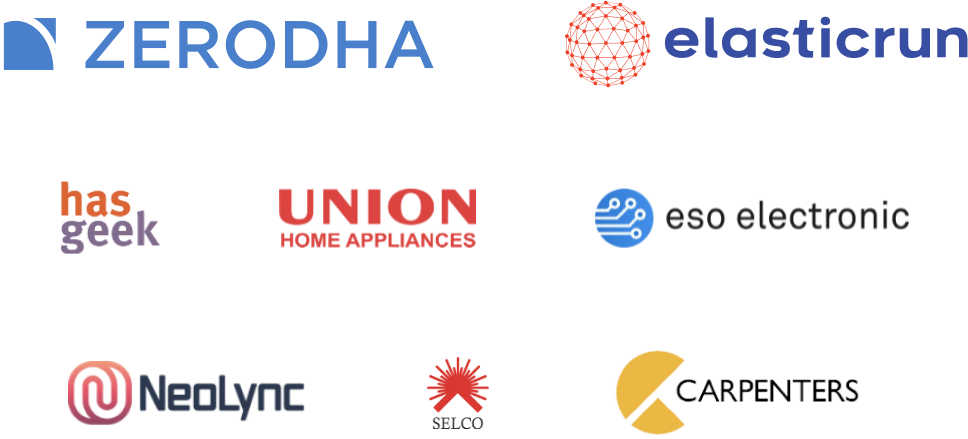Unified Platform for your business white paper
One unified platform like an ERP software or multiple SaaS apps? There are pros and cons to both approaches, let's talk about them in this business white paper.
Unified Platform for Your Business
For managing your business, you can choose best of breed (multiple software) or a single unified platform like an ERP. We explore the pros and cons of both ways. In the end, we all use software to make lives easier.
ERP vs SaaS is a common question that many companies will ask somewhere in the middle stages. Although both approaches have their pros and cons, the need for an ERP becomes clear after a certain point. In this document, we compare both ways and make a case for why use you should use an ERP.
Unified Platform for Your Business Summary
65% of enterprise companies don’t use an ERP system in their organization. This is especially true for smaller companies. Choosing multiple pieces of software as a company grows is natural to fulfill needs as they arise, but it should be noted that these software pieces should be replaced by a unified system when the organization becomes larger.
While there are two sides to both choices, choosing a unified system for managing businesses has some good operational advantages that save time and costs. In this white paper, we explore both scenarios and see the advantages and disadvantages of both ways. We’ll see some examples of both and put things into perspective using a narrative.

Download white paper
Table of contents
Background
1. Using multiple software
1.1 Pros of using multiple software
1.1.1 Easier to set up
1.1.2 Choose the best fit for each area
1.1.3 Smooth upgrades
1.2 Cons of using multiple software
1.2.1 Scattered system
1.2.2 Inconsistent Master Data
1.2.3 Navigational and access friction
1.2.4 Cross Reporting: Non-existent
1.2.5 Harder to maintain
1.2.6 Integration is a pain
2. Using One Software
2.1 Cons of using one platform
2.1.1 Business fit issues
2.2 Pros of using one software
2.2.1 One platform: Single source of truth
2.2.2 Data accuracy
2.2.3 Ease of use
2.2.4 Faster data access
2.2.5 The flipside: good discounts
2.2.6 Better communication across teams
2.2.7 Maintenance and monitoring
3. Examples
4. Customer Talk
Conclusion
Credits
ERPNext is the world's best 100% Open Source ERP Solution
Open Source Software for Modern Businesses
Accounting
Get a real time view of your cash flow. Full fledged accounting module covering every aspect of book keeping.
HR & Payroll
Manage full employee life cycle right from onboarding, payroll, attendance, expense claims, assets to separation.
Manufacturing
Effectively maintain and manage multilevel bill of materials, production planning, job cards & inventory.
Sales & Purchase
Increase productivity and lower costs by managing your sales and purchase cycles, from purchase to sales orders
CRM
Win and retain more customers by optimising sales process. Track leads, opportunities and send the quotes on the go.
Projects
Deliver both internal and external projects on time, budget and profitability. Track tasks, timesheets and issues by project.
Helpdesk
Deliver a better service experience with an intuitive issue tracker and integrated knowledge base.
Asset Management
Maintain and Manage details of assets, their movement, value adjustment and depreciation.
Website
ERPNext comes with a fully featured content management with blogs, web pages and forms.
Integrate with your favourite Apps
ERPNext has a host of built-in integrations that help your business take-off faster

Integrate with your favourite Apps
ERPNext has a host of built-in integrations that help your business take-off faster


